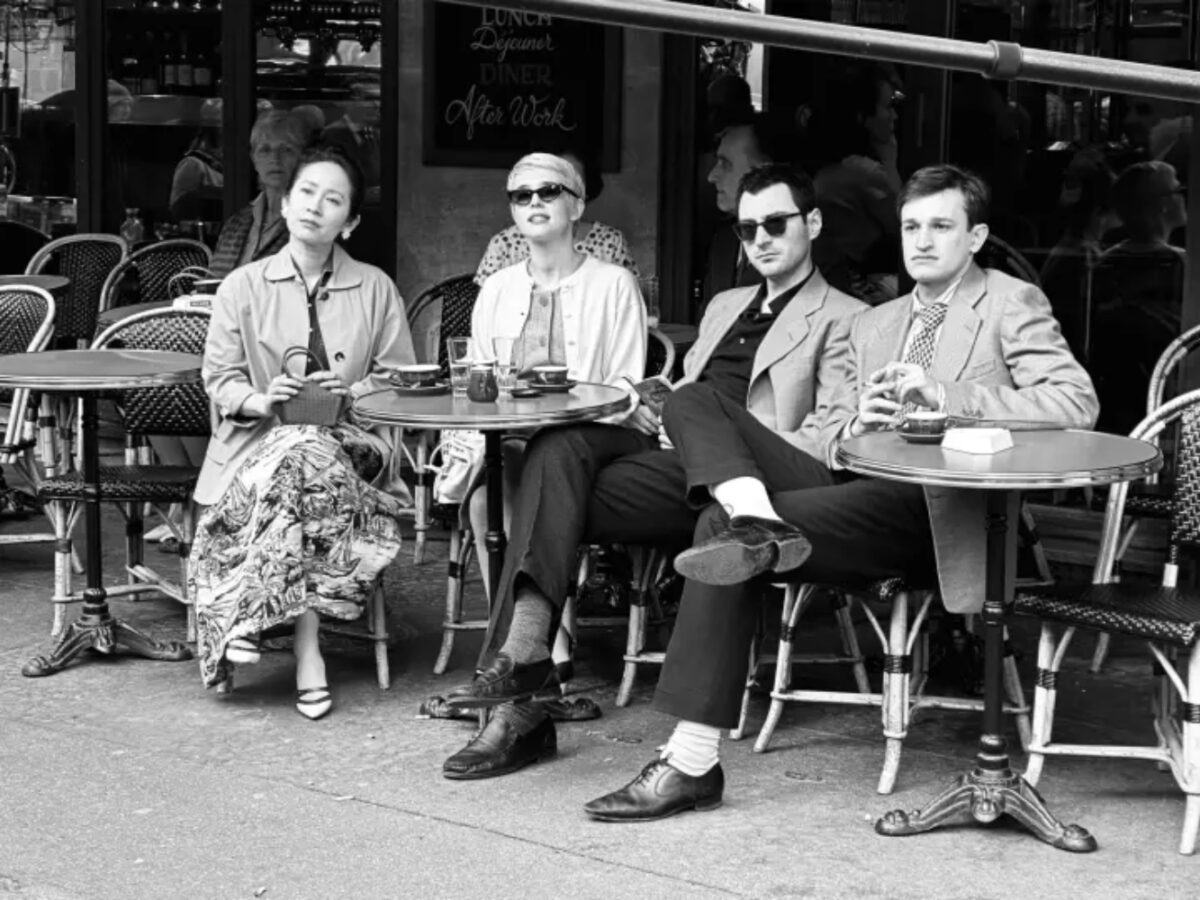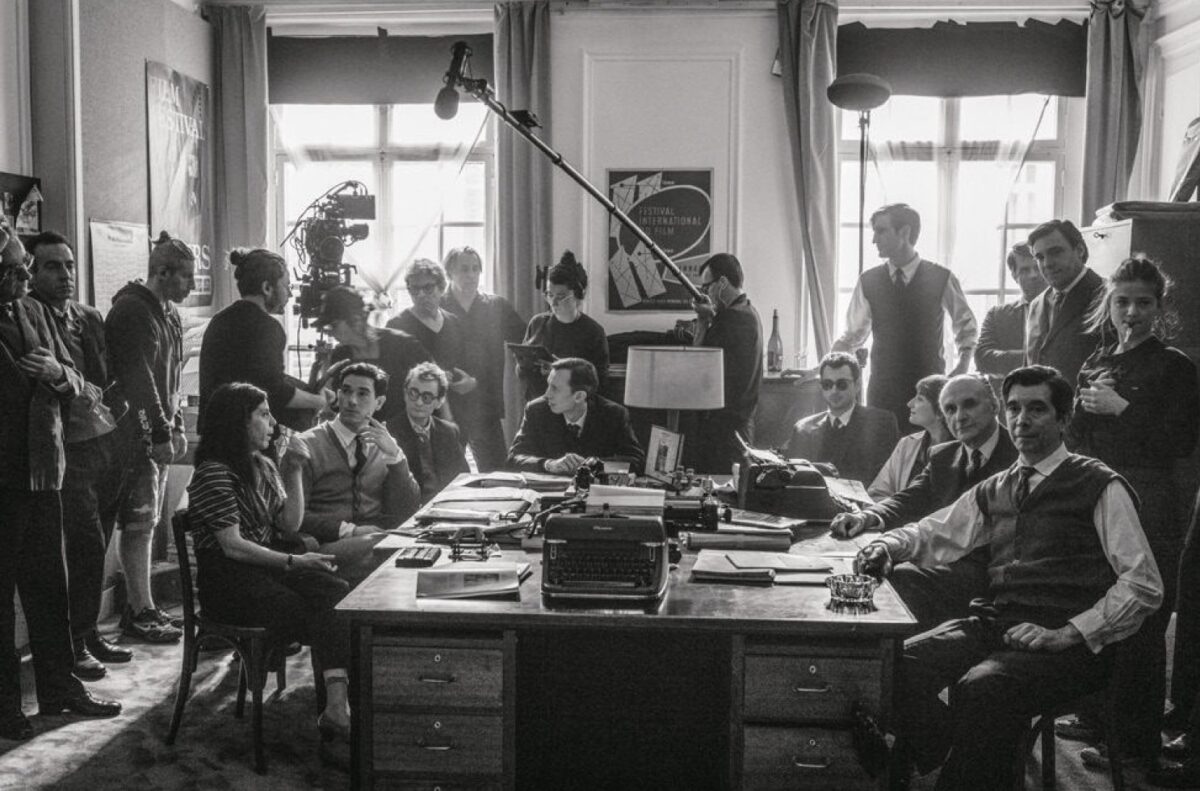First look notwithstanding, details have been few and far between on Richard Linklater’s Nouvelle Vague, largely understood to concern the production of Jean-Luc Godard’s Breathless, making notable a new set report from Les Inrockuptibles. It should’ve been obvious from the jump that America’s premier hangout filmmaker would resurrect cinema’s most-influential group as, well, a group, with Linklater describing his film as (in a somewhat contradictory manner) “the story of a personal revolution in cinema led by one man, and all the people around him,” with the implication of actors playing Jacques Rivette, Éric Rohmer, Jacques Demy, Agnès Varda, Alain Resnais, and Jean Cocteau.
Fittingly, Nouvelle Vague will not start with Zoey Deutch’s Jean Seberg (admittedly odd combination of words) filming on the Champs-Élysées, but at least stretches back to the 1959 Cannes Film Festival, where, upon The 400 Blows‘ triumphant debut, Godard “succeeded in convincing producer Georges de Beauregard to finance his film.” (This would explain the supposed casting of a young Jean-Pierre Léaud.)
Fears of a Trumbo– or Hitchcock-esque wax-museum Wikipedia page will stay at least a tad until the film’s seen in full, but by Les Inrockuptibles‘ account Linklater isn’t one to skirt granular detail. Note the description of a scene wherein “Godard, accompanied by his assistant Pierre Rissient and Raoul Coutard, presents Georges de Beauregard with the scooter which will allow him to hide a camera in order to film freely in Paris without attracting attention.” The director’s interest at least partly lies in “economic and technical constraints,” as he elaborates:
“All filmmakers want to make a film on the making of a film. It’s difficult to tackle Breathless, but the angle of his filming seems interesting to me because it is thanks to his method that he changed the history of cinema. The way the film was made was so radical that it not only changed the local industry, but it redefined what a film could be.”
Citing that he made Slacker “following the directions set out in Breathless” suggests, too, something of a full-circle moment for Linklater, whose enthusiasm over Godard’s feature debut hasn’t waned. “Breathless will never get old, it will be forever new. I discovered it when I was 20 and I’m 60 today, but it still has the same effect on me” has me itching to revisit a work I thought I knew front-to-back.
Shot with an emphasis towards the speed and enthusiasm of the French New Wave, Nouvelle Vague has quite the combination of pedigree and precedent. One last note to whet appetites: Linklater admits its filmmaker who most inspired him is not Godard or Rohmer, but Jacques Rozier.
Find a new image (featuring Deutch’s Jean Seberg, Guillaume Marbeck’s Godard, and Aubry Dullin’s Belmondo) and behind-the-scenes shot below:


